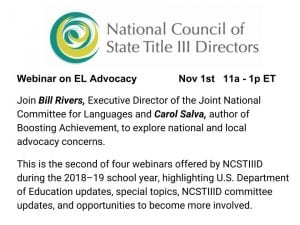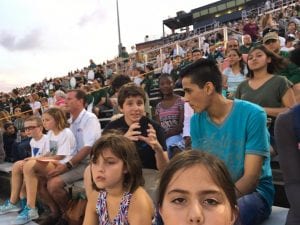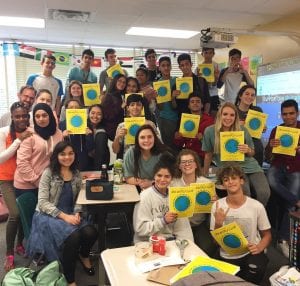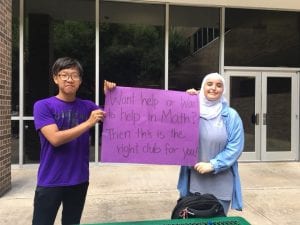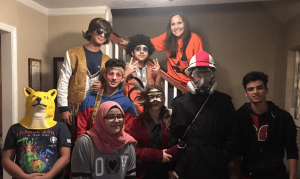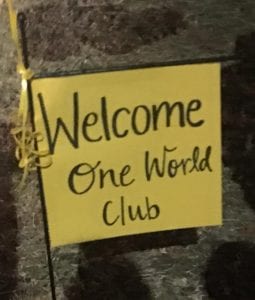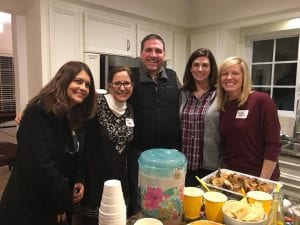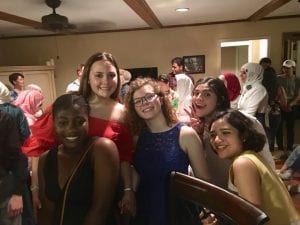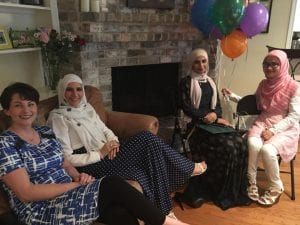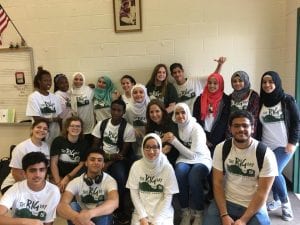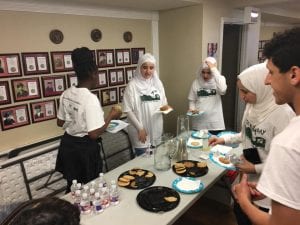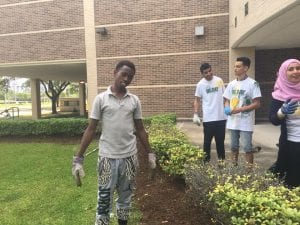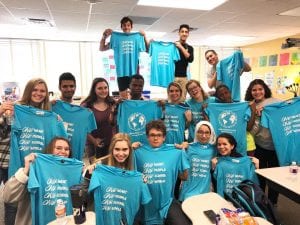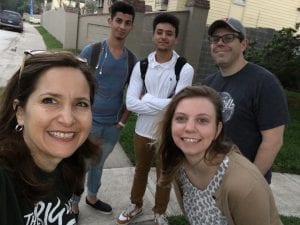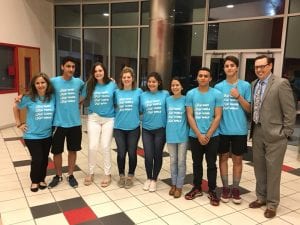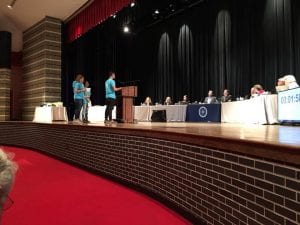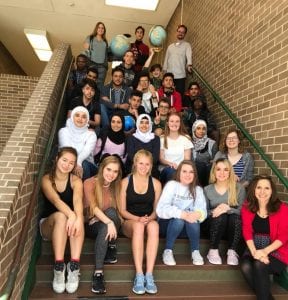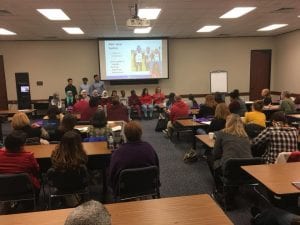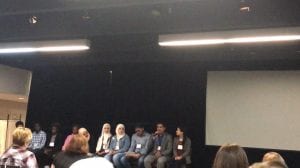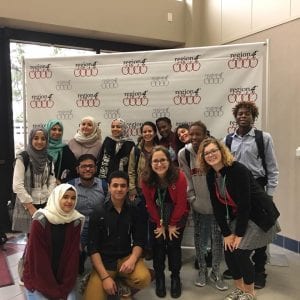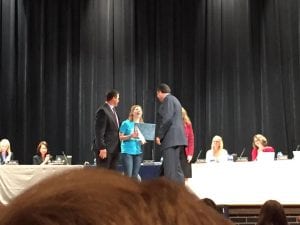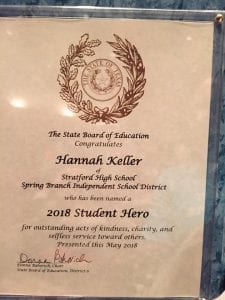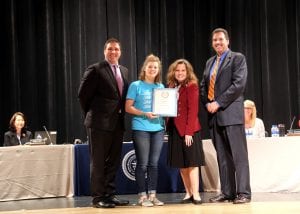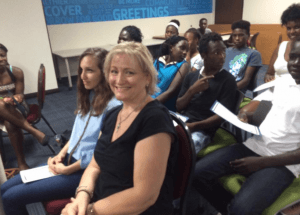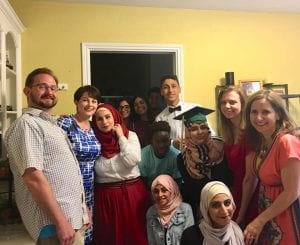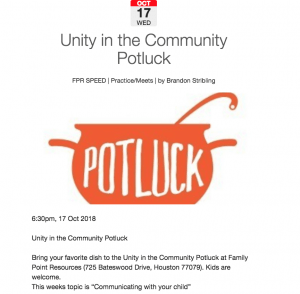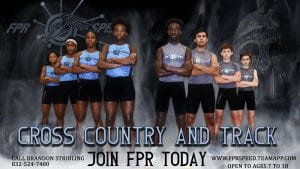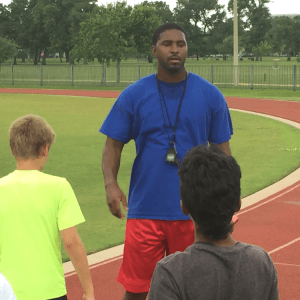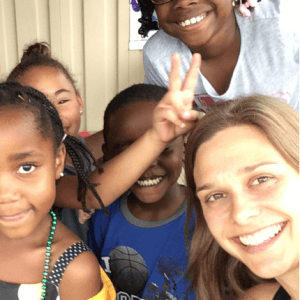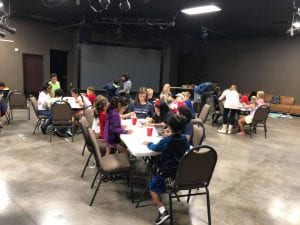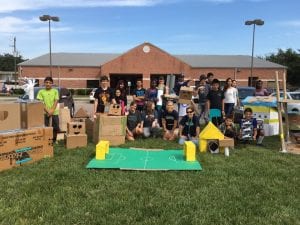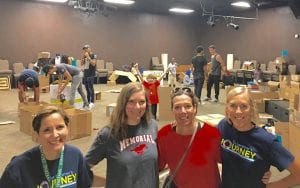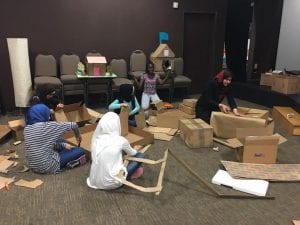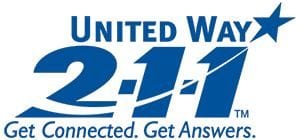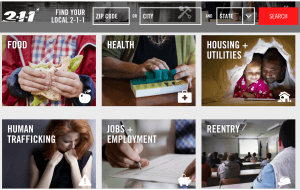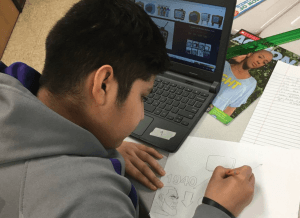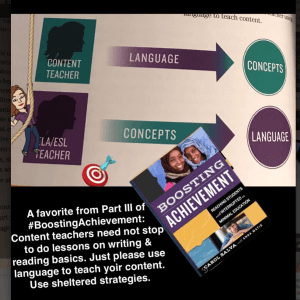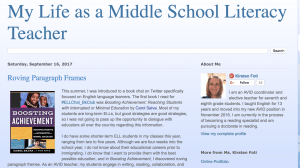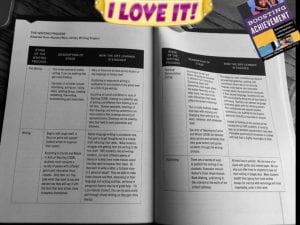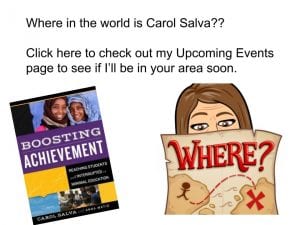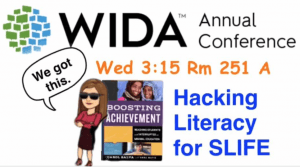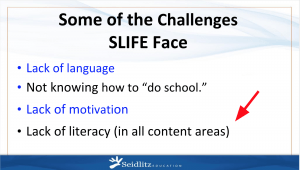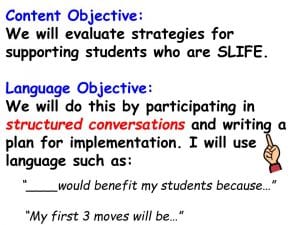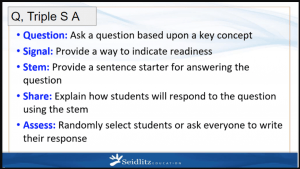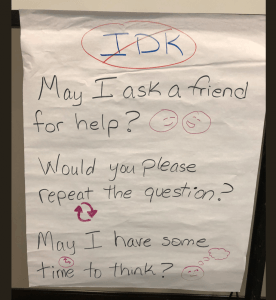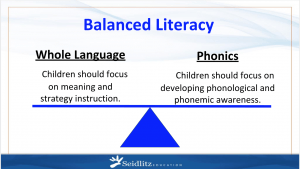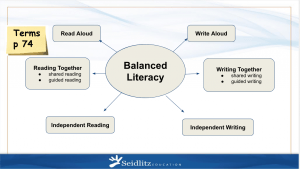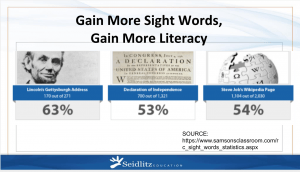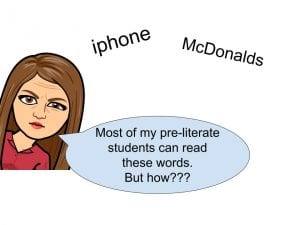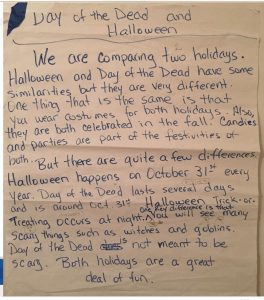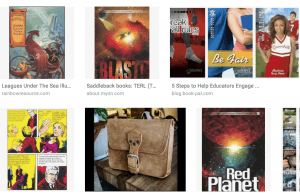Were you able to join us for this free National Council of State Title III Directors webinar on EL Advocacy? Below are all the resources I shared.
Please consider joining the NCSTIIID! You’ll get the archived video and you’ll be joining a group of passionate stakeholders who are supporting English learners in a variety of ways. We need you! Join here.
Grass Roots Advocacy
The effort I am spotlighting today is One World Club started by Hannah Keller of Spring Branch ISD in Houston, Texas. More efforts and ideas are at the bottom of this post.
One World Club was not started by the faculty but by a student community member that saw a need and took action.
Shortly after meeting some of our immigrant students, Hannah began tutoring the new arrival students with her friends. She organized events with so the newcomers would be included in activities like football games, museum trips, and other outside of school activities.
She then approached us about creating a formal club. She began making posters and recruiting her native-born friends as well as students new to the country. Soon it became a club for anyone and everyone. The club helps with tutoring and navigating the norms of school but above all, it is a place where authentic friendships grow.
An Advocacy Ripple Effect
The first picture below is of two newcomers from OWC who started a math club this year. It’s a club for students who love math and students who struggle with math. Their goal is to partner students to help each other with peer tutoring.
The second picture is our 2018 Trick or Treat meet up. Two students who are not immigrants showed up because they want to be a part of the club. They saw posters about it, they signed up and heard about the gathering. They came to hang out and traded phone numbers with our new ELs and said they were excited about more gatherings. Imagine the positive outcomes for ALL the young people in attendance.
Families Stepping Up
The club’s reach is well beyond the building. Hannah’s family has hosted social gatherings where community members, faculty and school board members are in attendance. I’ve also hosted events in my home. The adult and student friendships that develop at these gatherings are what our newcomer families say they need the most. They need friends to help them navigate all of the unknowns of their new surroundings.
Opportunities for ELs to Give Back
The One World Club also offers ALL members an opportunity to give back to our community. These young people (newcomers and native-born) are passionate about serving others. This offers every member a chance to feel pride, dignity and the authentic respect they deserve. Photos here of visiting a nursing home as well as grounds beautification around the school:
Standing with ELs
An example of standing in solidarity with immigrants, the club organized a “Walk to School Day” when public threats to Muslims began circulating on social media with a date specified. Many of our Muslim girls stayed home from school in fear but they were aware that the club was organized and walking together from different locations to support them. Walk to School day is set to be an annual tradition where we celebrate healthy habits and friendship.
The club is making an immeasurable impact on our English learners and their families. The newcomers have gained English quickly and some of the students (including SLIFE and newcomers) spoke to our school board to explain what the club has meant to them in an effort to see a similar club in other schools. Another high school in our district has already started their One World Club.
The students have presented as a panel at our Region IV TEA Service Center as well as our State TexTESOL Conference. They explain how teachers can help students with simple sheltered strategies and allowing these clubs to be a part of their school and community.
As requested in the webinar: Here is the 1 hour Video PD with three of our students (including SLIFE)
It is no surprise that Hannah Keller was awarded the State of Texas Student Hero award for our area. This prestigious award is only awarded to 15 students across the state each year. Donna Bahorich, chair of District 6 of the Texas State Board of Education told us that there were so many impressive students but Hannah’s actions stood out among them all.
The efforts of One World Club are magnified and supported by local community partners. Our district has an immigrant counselor, Patricia Economides who supports the club many hours outside of her workday. She and other district employees such as Tommy Knapik, Avery Hammond, Olivia Shirley, Sara Russo, and many others bring support and opportunities to our EL families. We have many faculty heroes for the ELs in our community!
Another very noteworthy partner is Trina Morford, a community member who organizes the Daily Dose education program for our district and others. She brings missionaries from The Church of Jesus Christ of Latter-day Saints to provide ESL classes and more to our parents and students. 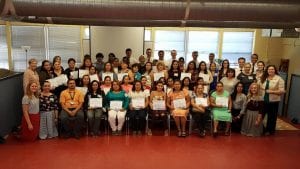
Trina is a community member who does much more than this impressive program. She helped organize Unity in the Community social gatherings and meetings to specifically respond to challenges that are faced by our new families.
Our local outreach center, Family Point Resources, is able to bring all of us together and is doing incredible work with our students and their families. Coach Brandon Stribling, Ms. Stephanie Hruzek and everyone at the center go above and beyond to advocate for our ELs. In the words from their website: “FamilyPoint Resources engages our community in supportive relationships that build hope, meet needs, and transform lives. We accomplish our mission by working toward mutual growth through listening, playing, and learning.”
I couldn’t agree more. Examples of their work include a partnership with Harris Country Department of Education to provide many services from GED and ESL classes to grocery programs, sports programs and other ways to include and support all families in our area. Check out their upcoming events here.
The United Way 2-1-1 hotline is a fantastic resource for ANY services our ELs need. We can advocate locally by making sure that our community members know about this hotline that serves thousands of people across the United States and parts of Canada. They need to know that they need only call 2-1-1 and that support is available in many different languages, 24 hours a day for free.
Thank you for wanting to advocate for your language learners and new families. If you have any questions, please reach out!
For more free webinars by the National Council of State Title III Directors, visit their website here.
Carol Salva
Seidlitz Education Consultant
Proud Advisory Board Member for NCSTIIID. Join us!
carol.salva@johnseidlitz.com
